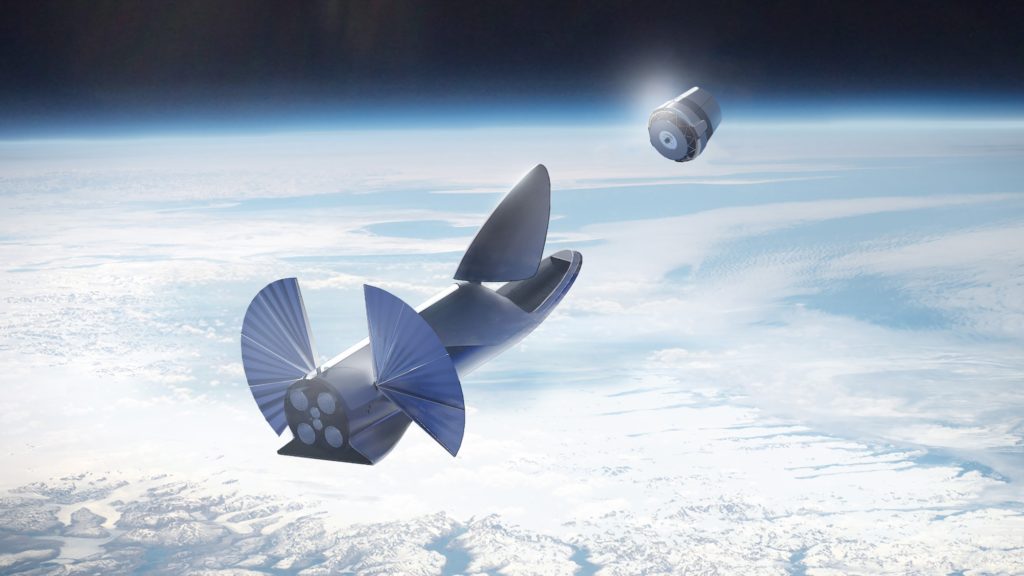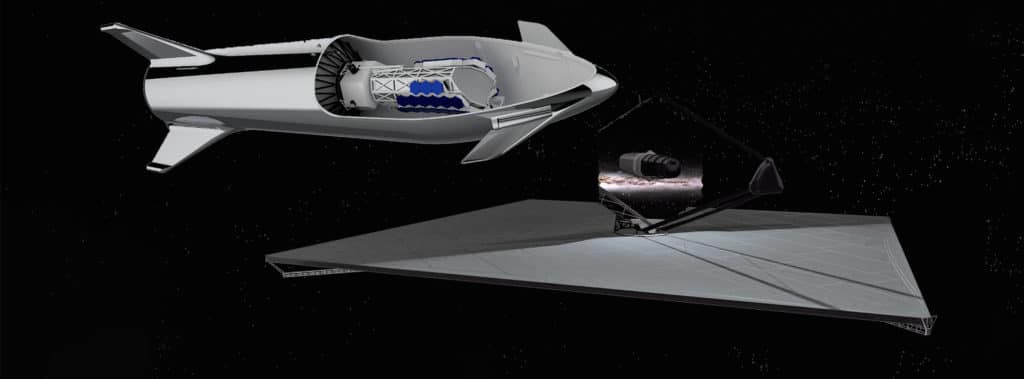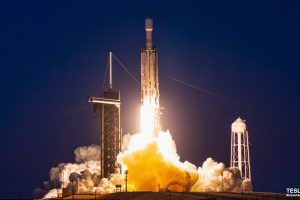In his latest batch of tweets, SpaceX CEO Elon Musk says that the company is already thinking about the many potential ways its next-generation Starship launch vehicle could be used in space.
Already, ideas publicly touted by the SpaceX CEO range from using Cargo Starships to clean up space debris with its mouth-like payload bay to a stripped-down, expendable variant of the rocket to rapidly send massive spacecraft throughout the solar system. Now, Musk says that SpaceX has also considered tethering Starships together in space to create a form of artificial gravity for passengers on multi-month journeys between planets, as well as the possibility of turning entire Starships into all-in-one orbital observatories a magnitude more powerful than Hubble.


Apparently invoked during discussions with astrophysicist and Nobel laureate Saul Perlmutter, at least parts of the physics community are already considering the possibilities offered by using Starship as a sort of foundation or spacecraft bus that could carry and operate vast scientific payloads. While Starship has already been officially floated several times as a serious contender for launch services for major future missions, this concept would instead see Starship function as the spacecraft itself.
As of 2021, Starship has yet to reach space or orbit once, but SpaceX isn’t far from that milestone. Eventually, perhaps just a few years from now, Starship will have successfully launched to and operated in orbit dozens or even hundreds of times and become a mature and reliable spacecraft.
At that point, it wouldn’t be out of the question to entrust Starships themselves to serve as long-lasting scientific spacecraft, exploiting a ‘bus’ that could offer abundant power, propulsion, thermal management, navigation, and communications capabilities to any ‘hosted’ payloads. That includes extensively modifying Starships on the ground to create vast space observatories, among numerous other possibilities.
Given Starship’s low production cost, 9-meter (~30 ft) diameter, and nominal ability to deliver at least 100 metric tons (~220,000 lb) of payload to low Earth orbit (LEO), it’s not inconceivable that ships could be outfitted with massive telescopes and scientific instruments. Perhaps more importantly, drastically reduced payload constraints (more than an order of magnitude relative to the Hubble or James Webb telescopes) could allow major innovation in spacecraft/instrument design, radically lowering costs while still improving reliability, redundancy, and performance.
Meanwhile, Musk says that SpaceX has also considered tethering crewed Starships together and spinning them around the center of that tether to create artificial gravity for crewmembers on months-long journeys between Earth, Mars, and other planets. Among fan communities, the tethered gravity concept has been circulating ever since SpaceX first announced Starship in 2016. Loosely researched by NASA and other institutions for decades, no real experimental efforts – save for a single halting test during a 1960s Gemini mission – have ever been pursued.
For Starship, orbital refueling could easily allow SpaceX to cut crewed Earth-Mars transit time to 100 days or less – subjecting astronauts to significantly less time in microgravity than those that crew the International Space Station (ISS). The value proposition of artificial gravity on 3-month cruises is likely substantially less clear-cut given the far-reaching complexity and modifications required to make such a system functional and make Starships compatible.
Regardless, Musk rather cryptically says that SpaceX has considered the concept, though he didn’t elaborate on whether the company ultimately decided to drop the subject or pursue it further.





